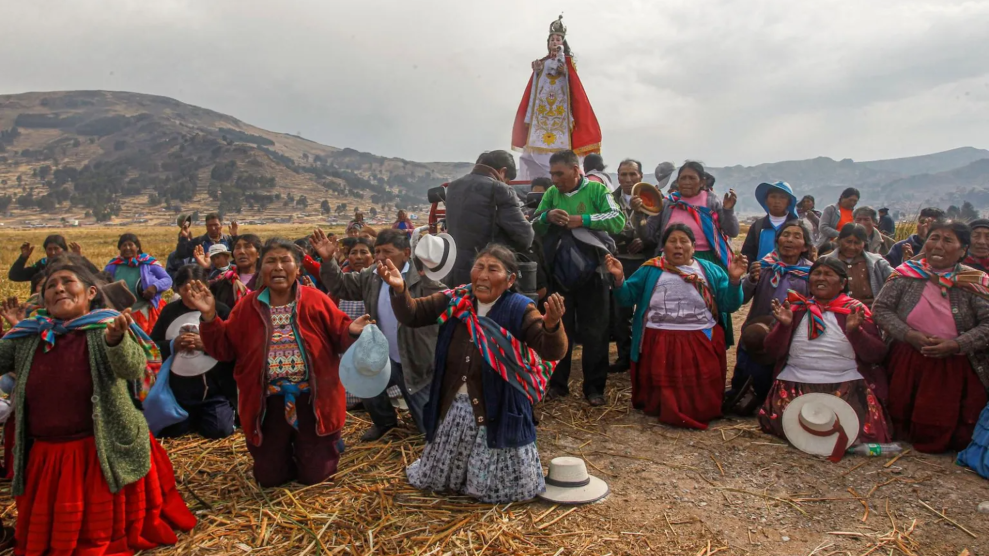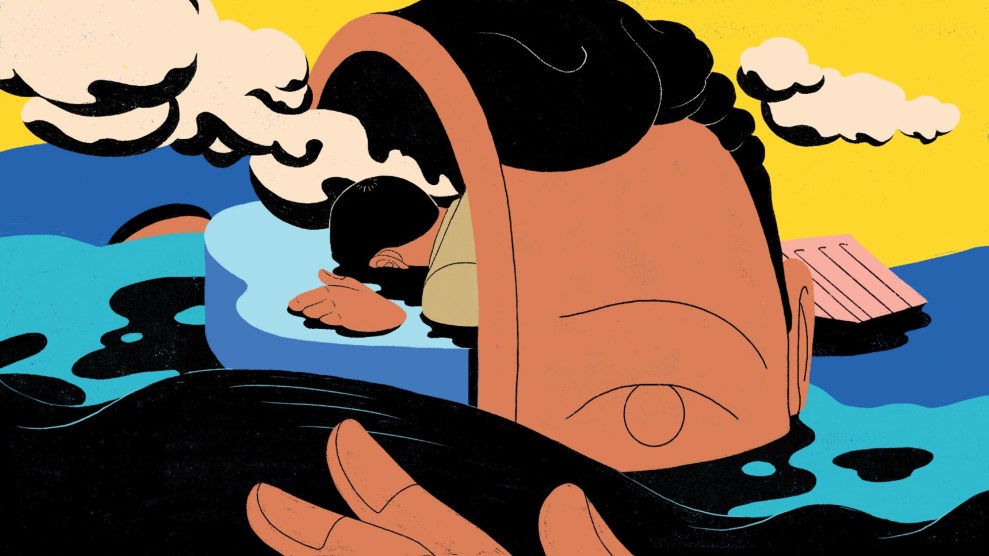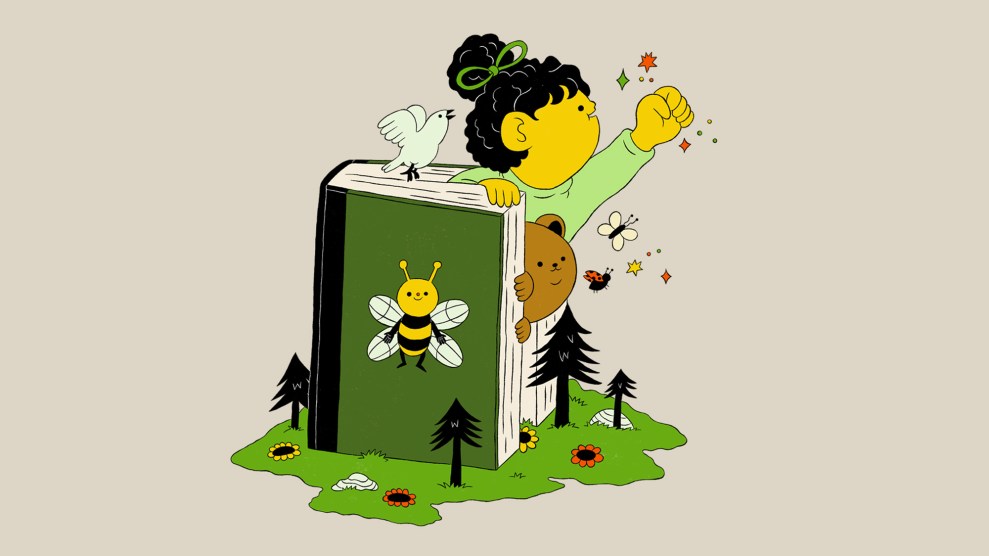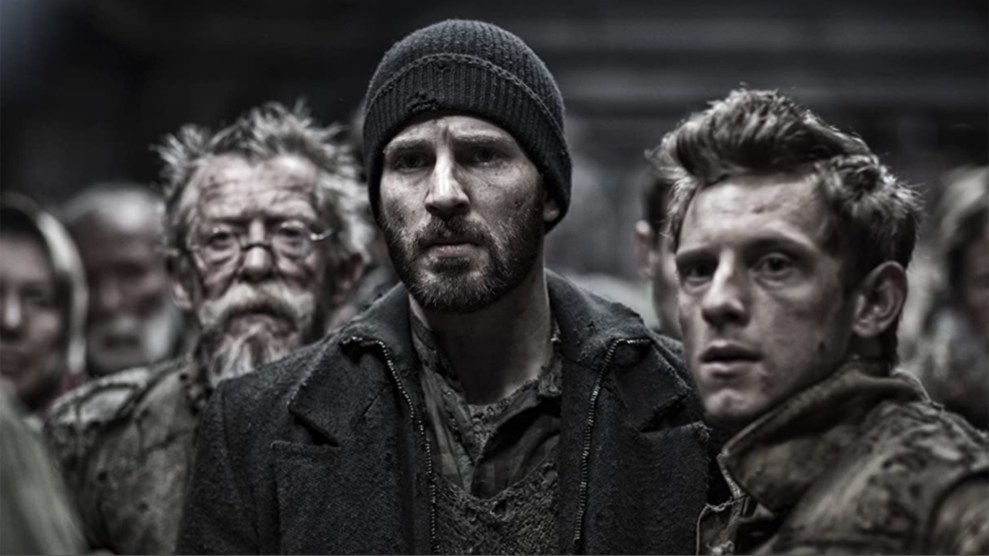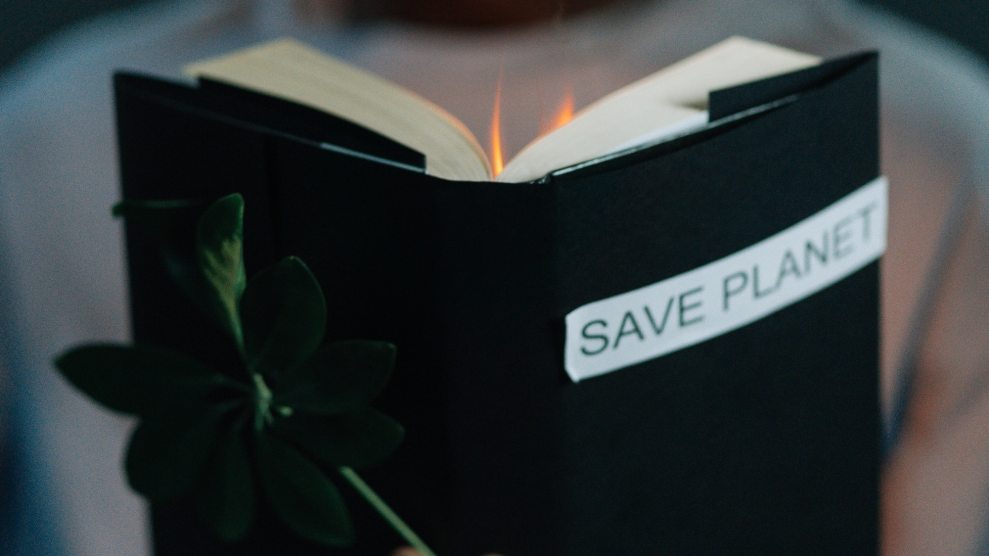
Ron Lach/Pexels
This story was originally published by Grist and is reproduced here as part of the Climate Desk collaboration.
This summer, the United States roasted like never before. People got third-degree burns from simply falling onto hot pavement in Arizona, filling up all the beds in Maricopa County’s burn center. High humidity teamed up with the Midwest’s worst heat wave in years to send the heat index, or the “feels like” temperature, soaring above 130 degrees Fahrenheit in parts of Kansas, sending record numbers of heat-stricken people to emergency rooms. Off the coast of Florida, the ocean warmed to hot tub temperatures, leading to mass death in the coral reefs.
Catastrophes have become a familiar aspect of summer, which some scientists now call “danger season,” but the disasters of the summer that just passed seemed to have reached a new level. A flash drought in Maui turned invasive grasses into kindling, priming the way for a fast-moving blaze that engulfed the town of Lahaina in one of the deadliest fires in American history. More than 1,000 fires burned across Canada’s forests, scorching seven times the acreage that usually burns in a year. In a peculiar twist, disasters began to escape their usual geographical and seasonal confines. Canadian wildfire smoke traveled south and smothered New York, Washington, DC, and Chicago; a rare tropical storm rained down on Southern California; wildfires scorched the bayous of Louisiana.
What once sounded outlandish, like material for a dystopian novel, is looking more and more like reality. So what is a writer of fiction supposed to do? For decades, authors have speculated what the world might look like when the climate from hell arrives. Consider American War by Omar El Akkad, set in 2074 during the outbreak of a civil war set off by a ban on fossil fuels, when Florida is erased from the map and Louisiana is half-underwater. In the six years since the book’s publication, the United States has become the most deeply polarized democracy in recent history; the intensity of heat waves and other disasters have eclipsed expectations. Earlier this year, the magazine Writer’s Digest called American War an “all-too-realistic cautionary tale.”
But El Akkad never intended it to be realistic at all. I asked him if it felt like the novel was starting to come true. “I thought that the way I had structured it was enough of an extrapolation that I wouldn’t have to deal with precisely the question you’re asking,” El Akkad told me. “And that has been obliterated in the last few years. That, to me, is terrifying.”
Extreme weather has melted the distinction between fact and fiction. As El Akkad described it, global warming doesn’t feel slow and steady; it feels more like falling down the stairs, with big drops that shake your expectations. One moment, you’re taking a nap in your house; the next, you’re running for your life from a wildfire. This year, a naturally hotter weather pattern called El Niño started setting in, adding extra heat on top of the climate change we’ve become accustomed to. July was the planet’s hottest month on record, clocking in at 1.5 degrees C (2.4 F) warmer than the preindustrial average. The disasters this summer serve as a preview of what the world could see during a typical year in the early 2030s. We no longer need authors or scientists to imagine it; real-world experience does the trick for anyone who’s paying close attention.
“For a long time, readers could return to a real world in which they could imagine that the people whose lives are wrecked are always going to be someone else,” said Kim Stanley Robinson, the sci-fi writer behind several prominent novels about climate change, including The Ministry for the Future and New York 2140, in an email. “Now, as more catastrophes happen in the real world, science fiction stories about the near future—what we now have to call climate fiction—these are simply realism.”
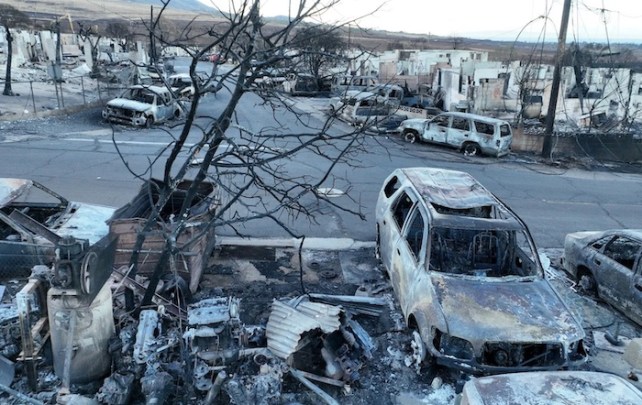
Burned cars and homes in Lahaina, Hawaii.
Justin Sullivan/Getty/Grist
To be sure, stories about climate change have felt like they’ve been creeping closer to reality for a while. Take Octavia Butler’s Parable of the Sower, a dystopia written in 1993 that traces the journey of a teenager migrating north away from a drought- and fire-stricken California. “If there is one thing scarier than a dystopian novel about the future, it’s one written in the past that has already begun to come true,” Gloria Steinem, the feminist activist, observed in 2016.
For authors trying to imagine the outer edge of what’s plausible, the pace of recent real-world extremes has prompted revisions to their drafts. That happened to Stephen Markley, author of The Deluge, a nearly 900-page book replete with disasters from the dust storm of 2028 to a super-hurricane that reduces the Carolinas to rubble in 2039. When he was revising the book in June 2021, a freak heat wave struck the Pacific Northwest, sending temperatures to 121 degrees F in British Columbia, off the charts of what climate scientists thought was possible at the time. Looking back at his draft, Markley said, what once seemed like surprising temperatures for the London and D.C. of the future “all looked so silly.”
Once or twice every week, someone sends Markley a message suggesting that reality is starting to parallel his book—linking to a news article about the Lahaina fire, for example, that has similarities to his book’s L.A. fire of 2031. “What I’ve sort of had to accommodate myself to,” he said, “is that my novel is going to be coming true for the rest of my life.”
For many Americans, the summer of 2023 could be remembered as the time that climate change became personal. At the end of June, 110 million people, more than a third of the U.S. population, were subject to air quality alerts as smoke from Canada drifted across the eastern half of the country. As July came to a close, 170 million Americans were under a heat alert; in late August, again, 130 million faced heat warnings. By the end of the summer, virtually no corner of the country had been left untouched by extreme weather and no part of the globe, either: 98 percent of the world’s population was exposed to hotter temperatures linked to climate change.
In the realm of fiction, alarming events like these often precede some kind of far-reaching response. The Ministry for the Future starts with a harrowing heat wave in India that causes the swift death of 20 million people. The rest of the world basically shrugged its shoulders, but the catastrophe caused a political shakeup in India. Citizens voted a new party into office, one focused on tackling climate change and inequality; ditching coal and building battery storage and wind, solar, and hydro plants became a national priority. As the years go on, the book is filled with attempts to deal with climate change, from economic policy solutions, like a “carbon coin” that incentivizes reducing and sequestering carbon, to scientific ones, like trying to save the glaciers by pumping out the water beneath them, allowing them to refreeze to the rock.
Will this summer’s climate disasters spur a similar response? Robinson makes the case that the real world is responding to climate change even better than in his book, though much of it is at the stage of plans and promises. He pointed to international treaties that he didn’t expect to see so soon, such as the recent global target to conserve 30 percent of the world’s land and water by 2030. “I wrote about the 2030s as ‘zombie years,’” Robinson said. “That was wrong—our 2030s won’t be like that, because we’re already in the thick of the fight to cope.”
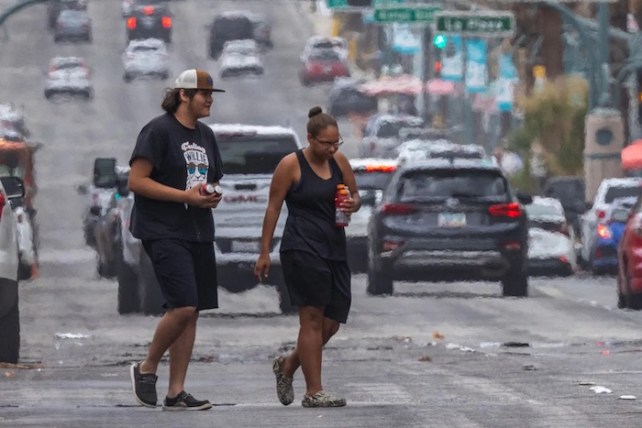
Heat radiates from the pavement in Palm Springs, California, amid a record-breaking heat wave.
David McNew/Getty/Grist
It’s often thought that when floods, heat, and fires hit home, it’ll spark some kind of awakening, opening people’s eyes to the problem. People have certainly taken notice: Even before this hellish summer, in polls taken this spring, half of Americans were already convinced that people are being harmed by global warming “right now.” But the line between awareness and action on a planetary crisis is not straightforward—popular support does not translate directly into policy change, though it might affect how people vote. “We happen to live in a world where rich people have to become convinced of something before policy is enacted on it,” El Akkad said.
Still, there’s some evidence that experiencing hot weather firsthand can have an effect on people’s concern. “We’ve seen that people do respond to climate change, but in a pretty limited way,” said Parrish Bergquist, a political science professor at the University of Pennsylvania. By studying public opinion polling and weather patterns, her research in 2017 found that when a state’s average temperatures increased of 1 degree C (1.8 degrees F) from one year to the next, it led to about a 1 percent increase in the number of residents who worry about climate change. The effect only showed up for temperature, not other climate-related impacts like flooding, and it decayed over time.
“But in a way, I feel like we’re living through this time where the signal is just getting much, much bigger,” Bergquist said. It’s hard to know whether that means we’ll approach a tipping point for action, or simply get accustomed to a new, ever-worsening normal.
Whatever the case, waiting around for catastrophes to jar people out of their indifference isn’t a great strategy for addressing climate change. “The movement has to come from another place besides waiting for the next calamity to strike,” Markley said. Given that the technological and policy solutions to reduce emissions rapidly are already at hand, the discussion on climate disaster should come with a firm look at what could be done to prevent the worst, he said: “Sometimes the doom loop leads to a fatalism that is not warranted given the incredible policy progress we’ve made in just the past few years.”
Take the Inflation Reduction Act, the most sweeping climate legislation ever enacted in the United States, signed a year ago by President Joe Biden. Containing $369 billion in clean-energy tax credits and funding for climate and energy programs, the law is expected to reduce emissions between 29 percent to 42 percent by 2030, compared to 2005 levels. Already, businesses are planning to pour $240 billion into investments in electric vehicles, batteries, and clean energy, according to numbers from the White House.
The sense that we are well into the thick of life on a hotter planet has prompted some authors to question whether “climate fiction” can last. “‘Cli-fi’ is often interpreted to be a subset of ‘sci-fi,’ and thus it’s expected to contain a speculative element,” Jeff VanderMeer, the writer of Annihilation, wrote in Esquire earlier this year. “Yet, in this moment, cocooned uncomfortably within [the] climate crisis, as if trapped within a porcupine turned inside out, the issue is not speculative.” Lydia Millet, the author of A Children’s Bible, has also argued against the category. “Aside from some shared source material, the highly diverse novels sometimes referred to as cli-fi have little in common beyond a recognition of the terrible cultural and emotional weight of a swiftly changing biosphere,” Millet wrote in the Los Angeles Times in 2021.
The way El Akkad looks at it, cli-fi might not survive much longer simply because climate change will be the backdrop of everything that’s written, fiction or not. “If you are going to say something about what it means to be human, you cannot ignore the overarching bucket in which all of humanity sits, which is this planet. And from there, you can’t ignore what we’ve done to this planet. … It’s baffling to me how anyone can write anything and not consider the greater context in which that thing is happening.”
